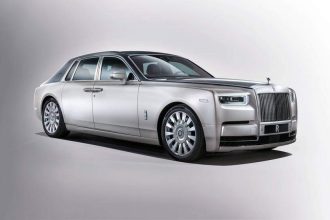A control system is what commands equipment to do what it needs to do. A control system is the brain of an operation. The control system controls all machines or devices on a production line. These six different parts are responsible for making everything run smoothly on the production line within a plant.
Wire Harness
A wire harness is what carries power from the control system to the machine. Whether its wiring harnesses from Allplant or another store, they are all a bundle of wires that carries amps and watts from a power source to a machine. For example, in a car assembly plant, wire harnesses provide electricity to the automated equipment so they can work. These types of wire harnesses have increased tremendously over time, going from about 1,500 wires in a car from the 1950s to about 5,200 wires in a modern car.
Also, wire harnesses are not directly proportional to weight. Automated equipment may weigh more but wire harnesses are not needed to be heavier. Wire harnesses can become lighter, removing some insulation and rubber coating on wires to decrease the amount of weight on the wire harness bundle.
HMI Panel
The interface between people and machines is handled by an HMI panel. The operator interface provides real-time data for users in a machine or plant environment. It also contains error messages for operators to know if something goes wrong. The two types of human-machine interfaces are electrical and pneumatic/mechanical.
Pneumatic/Mechanical HMI panels typically have push buttons, faders, knobs, or switches labeled with words or icons. They require air pressure cabinets and manifolds that can be bulky. Electrical HMI panels are common today since they use PLCs that control the production line. These human-machine interfaces have touch screens, buttons, and switches to be communicated with.
Programmable Logic Controller (PLC)
A programmable logic controller, or PLC, is an industrial computer that has inputs and outputs. The PLC also needs a program to tell it what to do with each input. When the operator presses a button on the control panel, the PLC receives this information through an input device, which can be buttons or something similar. This information tells the PLC what to do with that input. For example, if the operator presses a button on the control panel and it is programmed to start a machine, then this information will tell the PLC to send power to the appropriate electrical component and turn on the machine. This information can be given by anything, such as buttons or an electronic eye. It is the most widely used industrial computer in manufacturing today.
For example, in an automobile assembly plant, the PLC uses inputs from push buttons on the control panel to determine what action should be done with that input. If an operator presses a button to start a car, then this information tells the PLC to send power to certain electrical components and turn on the conveyor system so that it can move forward.
PID Controller
An automatic control system uses a PID controller to determine the input needed to keep a process at its set point. It is called “proportional, integral, derivative.” This means that it senses where the process is and corrects it by either speeding up or slowing down that variable of the overall system. A proportional controller detects the difference between its setpoint and the output of a process. It responds by increasing or decreasing the amount of proportionate change, referred to as “proportional band.” The rate at which it corrects is determined by how much open-loop gain there is. An integral controller detects whether or not the steady-state error has changed in response to a change in the input and corrects it by applying a proportional band over time. The derivative term is used to determine the rate of change in the error between the measured value and setpoint. A PID controller uses all three components-proportional, integral, and derivative-to control a process.
For example, say that the temperature in a room is dropping. The thermostat will sense this change, which is proportional to the rate of change (the integral term). It will then determine how much heat needs to be added or subtracted to bring the temperature back up to the setpoint (proportional band), and turn on an electric heater until this correction is made.
Automatic identification systems (AIS)
An automatic identification system uses barcodes, radio frequency identification tags (RFID), and other technology to collect data from a product moving through a production line. This information is then transferred to a control system, which relays the information through an enterprise resource planning (ERP) or a manufacturing execution system (MES).
Then, the information is transmitted to a planning system, which combines it with other data to optimize manufacturing.
For example, as a product travels through the production line, it will be scanned by a barcode scanner. This information is then sent to a computer that tells the control system what needs to be done with that particular product. That information is then sent to the PLC.
Alarm Management System
An alarm management system is a computer-based tool used to monitor and control alarms and other processes that require human input. If an alarm goes off, it triggers a screen or email that notifies operators of what went wrong so they can take corrective action as needed. Alarm management software also integrates with the control system and centralized alarm data.
An alarm management system can tell operators which alarms went off when they occurred and what actions were taken to resolve them. It also lets managers track trends and identify any recurring issues that may need to be addressed.
For example, a bell could go off if the PLC does not receive a signal from a machine. When that alarm goes off, it triggers an alarm management system to send out a message to the operator of that machine so he or she can try and fix whatever is causing the issue.

This article was on the six types of parts that make up a control system. There are many different paths to take on how to implement control, but all have some kind of controller. With so many benefits out there for implementing controls, it will be hard to find an industry not adopting automatic control systems. The 6 different types of parts that make up a control system include a wire harness, the programmable logic controller (PLC), an automatic identification system (AIS) for gathering data, an alarm management system to monitor and control alarms, integrating with the enterprise resource planning (ERP) or manufacturing execution system (MES), and finally how to optimize the process through a planning system.















